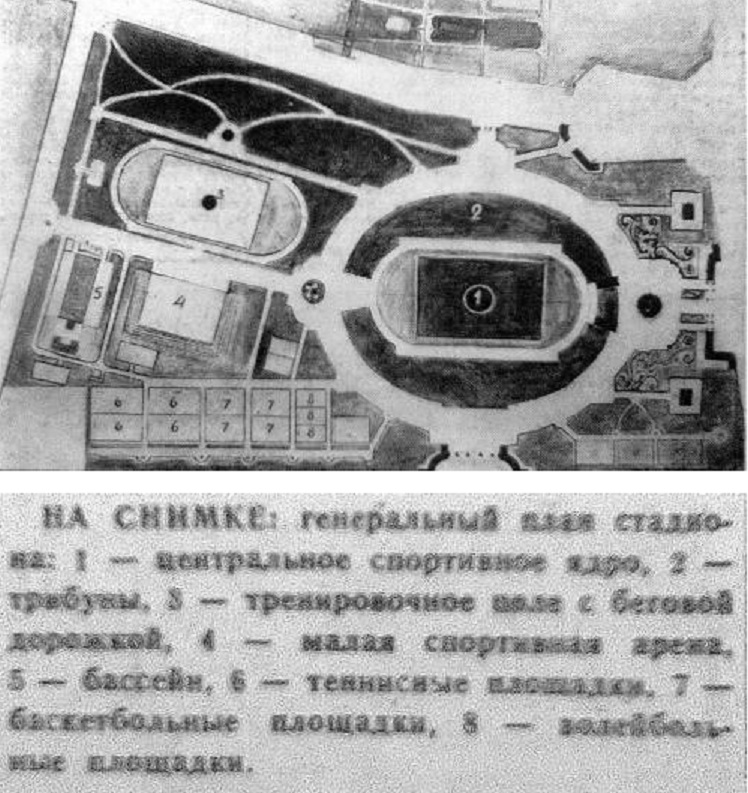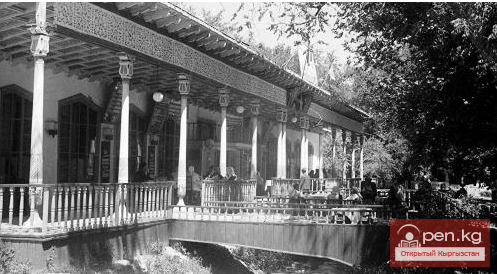
REPORT OF THE EXECUTIVE COMMITTEE OF THE FRUNZE CITY COUNCIL OF WORKING DEPUTIES ON THE CONDITION OF THE CITY ECONOMY AND ITS FURTHER DEVELOPMENT IN THE FOURTH FIVE-YEAR PLAN
Frunze, November 4, 1946.
Near the rivers Ala-Medinka and Ala-Arch, at the foot of the Kyrgyz Ala-Too, lies the capital of the Kyrgyz SSR, the city of Frunze, formerly the county town of Pishpek, renamed in 1926 in honor of the talented commander and fervent Bolshevik Mikhail Vasilyevich Frunze.
The city of Frunze is located in the picturesque Chui Valley at an altitude of 774 meters above sea level and is a relatively young city, only 68 years old.
During the years of Soviet power, a number of large industrial enterprises were built in the city: a meat processing plant, a leather factory No. 2, a woolen fabric factory, the Frunze factory, knitting factories, a tobacco factory, a tool factory, a hemp-jute factory, and several other factories and plants.
The city has 3 higher educational institutions, 6 technical schools, 27 schools, and 57 children's institutions, which has led to a growth in the city's population, increasing 13 times compared to 1917.
Cities are built and acquire a cultural appearance over centuries; the city of Frunze has grown over the past twenty years.
It is quite natural that not all streets of the city are equally beautiful. The street named after Dzerzhinsky looks particularly beautiful, along which a boulevard stretches through the entire city, lined with oak and walnut trees.
The Government House and the houses of the ministries, along with the square and flower beds located between them, form the most beautiful and architecturally designed corner of the city.
Next to the large buildings, one can still find an unremarkable house with a thatched roof, but anyone who has not been to these places for twenty years would not recognize the city. It has 320 straight streets, of which 50 are main roads, covered with asphalt and stone. Where twenty years ago there was only a camel caravan route, a railway now winds its way.
This report was compiled at the request of the Ministry of Foreign Affairs of the Kyrgyz SSR.
Against the backdrop of the majestic Tien Shan ridge rises a beautiful airport that daily sends dozens of planes to all corners of the republic.
The city of Frunze is beautiful and full of special charm, but like any city, it still needs much. There is no tram system, and the water supply and sewage networks are insufficient.
The upcoming five-year plan will make the city even more beautiful and convenient.
Design and exploratory work is already underway for the construction of the most convenient type of ground transport - the trolleybus. By the end of the five-year plan, trolleybus routes will connect all districts and working centers of the city.
At the same time, the bus and taxi fleet will be expanded.
There will be a complex and labor-intensive task of expanding and constructing a new water supply system, which will provide high-quality water to the entire population and industry of the city. For this construction, 3 million rubles have been allocated, thus the capacity of the City Water Supply in 1950 will be increased to 29 m3 of water per day.
Currently, the Trust Santekhstroy has begun construction of the first phase of the city sewage system, for which up to 5 million rubles will be invested in the fourth five-year plan. With the launch of the sewage system, the sanitary condition of the city will significantly improve.
In order to further improve and enhance transportation, the construction of new paved roads is planned; by the end of 1950, asphalted roads worth 2.5 million rubles covering an area of 80,000 square meters will be built in the city.
The five-year plan provides for further increases in allocations for the construction of hydroelectric stations, during these years three hydroelectric stations will be built. Thus, the electricity capacity will be increased to 16,800 kW by the end of 1950, which will fully meet the needs of local industry, urban transport, and household consumption. Simultaneously with the commissioning of new capacities, the existing network will undergo major reconstruction; in 1946 alone, it is planned to replace 35 km of power lines.
The housing stock of the capital will be enriched with new large multi-story buildings, more than 30 houses with a volume of 17,000 square meters will be constructed.
One of the most beautiful structures in the city will be the new opera and ballet theater, construction of which has already begun.
The area of the existing buildings of the Kyrgyz branch of the Academy of Sciences and the Ministry will be significantly expanded, and the construction of a large building for the Central Public Library and the Museum of National Culture is also planned.
2 million rubles will be allocated for the construction of a new comfortable hotel for 200 guests. At the same time, the network of communal laundries will be expanded, with two new laundries to be built at a total investment of 400,000 rubles.
Already in 1946, additional street lighting will be implemented, which will increase the number of light points to 1,200, to give the capital an even more beautiful appearance; the route of the second channel of the Big Chui Canal will be laid through the entire city in this section of the canal. The construction of a water station, swimming pool, and beach is planned.
Among other major works that will be carried out during the 1945-1950 period, it is worth noting the radical reconstruction of the airport, hippodrome, and central market, the latter will occupy an area in the south with its pavilions.
On the outskirts of the city, the buildings of two spinning, textile, and furniture factories, as well as auto repair and car repair workshops, will rise.
A new automatic telephone station will connect the capital of Kyrgyzstan with all fraternal republics.
In the new five-year plan, Soviet people see the path to further development of the country's power and improvement of their cultural and material well-being.
The adoption of the law on the five-year plan by the Supreme Soviet of the USSR has caused a tremendous surge in labor. The entire nation has expressed its readiness to fulfill and exceed the plan of great works.
Chairman of the Frunze City Executive Committee Koybagarov
Central State Archive of the Kyrgyz Republic. Fund 2681. Inventory 1. File 22. Pages 245-249. Original.
Organization of the city prosecutor's office and children's cinema in Frunze. Documents No. 170 and No. 171 (summer 1946)









































